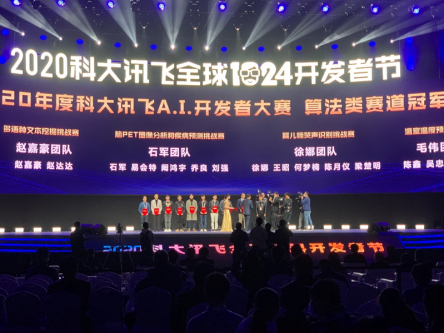Recently, Hongyan Super-computing group from USTC gained two champions in artificial intelligence and big data, in the 8th Asia-Pacific RDMA Programming Competition and 2020 Developer Final Competition. Prof. AN Hong from Department of Computer Science and Technology & Department of Big Data of USTC, was the general instructor for this group.
As the high-speed key intercommunication technology on cloud computation and big data platform, Remote Direct Memory Access (RDAM) has resolved the tricky problems where data center could not expand resulting from over-consumed CPU resources, and has greatly enhanced the application performance.
Asia-Pacific RDMA Programming Competition was sponsored by HPC-AI Advisory Council. The competition required competitors to transplant the storage communication protocol of SPDK(Storage Performance Development Kit) or PMEM(Persistent Memory Programming) to UCX(Unified Communication X) through current RDMA. Competitors should analyzed the SPDK communication mode within 48 hours, and optimized it by UCX optimizer, which fulfilled the original aspiration of this competition—more competitors would learn more about the convenient RDMA Programming methods and further optimized communication performance by cutting-edge UCX optimizer.
Hongyan Group analyzed SPDK communication framework in the extremely limited time period, and put forwarded two reliable technique methods to achieve UCX port realization to stand in the limelight of this competition with their excellent performance.
Another competition - 2020 AI Developer Final was held by Iflytek, attracting more than 9000 groups for competition the whole world. Hongyan group led by Prof. AN Hong, the first time to take part in this competition and consisting of five members, won the champion of “Brain PET Image Analysis and Disease Prediction Competition”.

The award ceremony
Brain PET (Positron Emission Tomography Image in Brain) displays the brain lesions of genes, molecule, metabolism and functional state. Taking advantage of positron nuclide to mark metabolic substance including glucose as a photographic developer and reflect the metabolic changes of this photographic developer intake by focus,brain PET provides bio-metabolic information in clinic and strongly supports the detection of diseases such as cerebral epilepsy, cerebral tumor, Parkinson’s disease and Alzheimer’s disease. “Brain PET Image Analysis and Disease Prediction” consisted of three phrases including the preliminary stage, quarter-final as well as the final. Hongyan group completed a series of tasks in problem definition, data analysis and its solution, survey and modeling, algorithm optimization as well as the final roadshow, and impressed the judges by their excellent performance and final defense on the spot.
Since the foundation of USTC Hongyan super-computation group nine years ago, strong supports from Department of Computer Science and Technology, Department of Big Data, Teaching Affairs Office, Graduated Department, USTC Super-computing Center as well as Information and Computer National Experimental Teaching Demonstration Center have flocked in. At the present, Hongyan group is standing in the phrase of transition from the old to the new, and embracing more and more young teachers to join this group in guidance for an excellent performance. In 2019, USTC initiated “First-class Under-graduated Education Improvement Program” and put computer, the same as mathematics and physics, into the general course scheme for all under-graduated students.
(Written by Wang Jinhua, edited by LI Xiaoxi, USTC News Center)